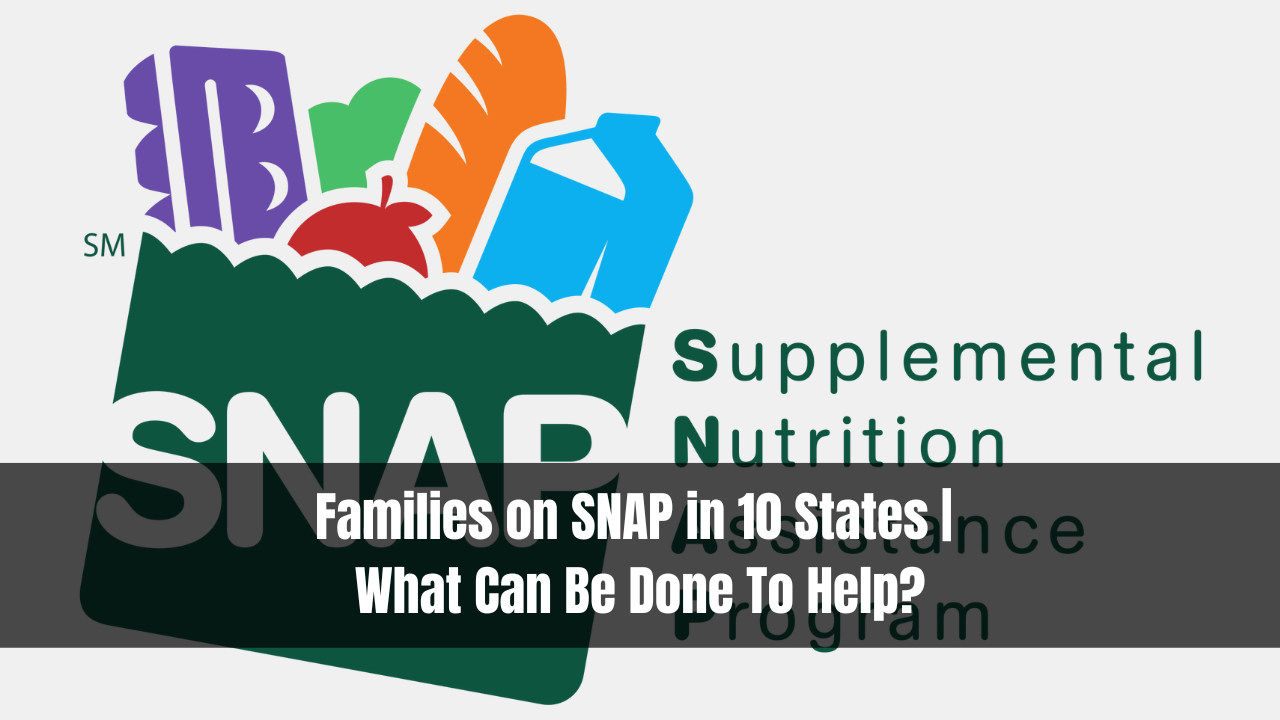SNAP
Families on SNAP in 10 States | What Can Be Done To Help?

Families on SNAP in 10 States | What Can Be Done To Help. The Supplemental Nutrition Assistance Program (SNAP), formerly known as the Food Stamp Program, has been a crucial government initiative since 1939. Aimed at providing food assistance to Americans in need, SNAP benefits are distributed based on income and household size. In 2022, 41.9 million Americans, constituting 12.5% of the population, received SNAP benefits, according to the Pew Research Center.
Eligibility Criteria
SNAP eligibility is determined by gross and net income thresholds relative to the federal poverty line. In 2023, a family of four qualifies with a gross monthly income of $3,007 and a net monthly income of $2,313. Variations exist for Alaskan and Hawaiian residents, as well as for households with members aged 60 or older or disabled.
Benefit Disparities
While the average monthly SNAP benefit per person is $181.72 or $343 per household, the amount varies significantly across states. Factors influencing benefit amounts include income and household size. For example, New York average benefit is $212.09, while Oklahoma’s is $127.32.
Ranking Methodology
To identify the states with the highest percentage of families on SNAP, GOBankingRates utilized data from the U.S. Department of Agriculture’s Supplemental Nutrition Assistance Program and the U.S. Census Bureau’s American Consumer Survey.
States with High SNAP Participation Rates
1. West Virginia
Household SNAP Participation Rate: 22.04%
Contributing Factors: High poverty rates, with over one in five children living below the poverty line.
2. New York
- Household SNAP Participation Rate: 22.10%
- Contributing Factors: Disparate wealth distribution, urban concentration, and significant poverty rates among adults and children.
3. Oklahoma
- Household SNAP Participation Rate: 22.24%
- Contributing Factors: Low state incomes, with more than 21% of children living below the poverty line.
4. Illinois
- Household SNAP Participation Rate: 22.62%
- Contributing Factors: Effective enrollment strategies, despite 10% of adults and 16% of children living below the poverty line.
5. California
- Household SNAP Participation Rate: 23.04%
- Contributing Factors: Disparities between wealthy cities and impoverished counties, low SNAP enrollment rates.
6. Nevada
- Household SNAP Participation Rate: 23.43%
- Contributing Factors: Significant food insecurity during the pandemic.
7. Louisiana
- Household SNAP Participation Rate: 24.20%
- Contributing Factors: Highest poverty rate in the nation, with nearly 27% of the state’s children living in poverty.
8. Massachusetts
- Household SNAP Participation Rate: 24.32%
- Contributing Factors: High wealth, but one-quarter of residents still rely on SNAP, exacerbated by the pandemic.
9. Oregon
- Household SNAP Participation Rate: 25.68%
- Contributing Factors: Above-average unemployment and poverty rates, along with increased SNAP awareness efforts.
10. New Mexico
- Household SNAP Participation Rate: 31.25%
- Contributing Factors: Higher income eligibility thresholds, online application access, and lower average state incomes.
What Can Be Done To Help?
Addressing the high percentage of families on SNAP requires tackling the root issue of poverty. While global challenges such as food waste and infrastructure exist, the primary focus in America should be on raising the incomes of the impoverished.
Long-term solutions involve creating higher-paying jobs, improving access to affordable healthcare, education, and housing. However, the path to achieving these goals remains a ongoing battle for legislators and rights advocates.
Conclusion
Addressing the prevalence of SNAP reliance demands a multifaceted approach, emphasizing poverty alleviation through increased incomes and improved access to essential services. The ongoing struggle for comprehensive solutions underscores the complexity of combating food insecurity in the United States.

-

 UNISA News5 months ago
UNISA News5 months agoUniversity Applications For 2024 Are Now Open
-

 Blog5 months ago
Blog5 months agoUnisa Online Application 2024-2025 – www.unisa.ac.za
-

 UNISA News4 weeks ago
UNISA News4 weeks agoUNISA Courses in Teaching Foundation Phase
-

 UNISA News4 weeks ago
UNISA News4 weeks ago1 Year Diploma Courses at UNISA
-

 Blog4 weeks ago
Blog4 weeks agoUnisa Online Application 2024-2025 Apply Now
-

 UNISA News5 months ago
UNISA News5 months agoUNISA Closing Date for Registration 2024
-

 UNISA News4 weeks ago
UNISA News4 weeks agoCan I Do Diploma In Teaching At UNISA?
-

 UNISA News4 weeks ago
UNISA News4 weeks agoRE5 Certificate UNISA



















